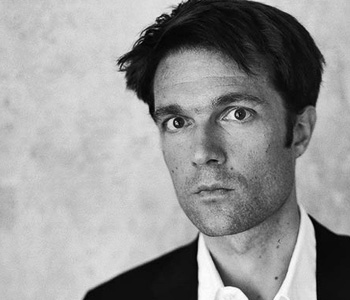Roger Karapin
Protest Politics in Germany: Movements on the Left and Right since the 1960s
Penn State Press
336 pages, 6 x 9 inches
ISBN 978 0271029863
Protest Politics in Germany is about the interactions between protest groups, their allies, and their opponents. The settings are conflicts that have dominated German politics in the last quarter of the twentieth century: conflicts over urban renewal, nuclear energy, and immigration by asylum seekers. What I want to convey in the book is that politics matters, that interactions matter, that unpredictable and sometimes remarkable things happen in protest movements because of how actors respond to each other.
Whether and how a movement develops isn't determined by the nature of the protest group, or the nature of the government, or by social and economic forces. While protesters depend on a favorable political environment, they can sometimes make their own opportunities. By undertaking bold actions and forming alliances with other protesters, they can win support from allies, trigger mistakes by their opponents, and in those ways create conditions that favor their own success. Different actors sometimes get involved in mutually reinforcing interactions that lead to big things.
This book is unusual in some ways that I hope will make it more rewarding to readers. I explain not only why protests become large, but also why they take different forms – routine and conventional, or nonviolently disruptive, or militant and violent. I also try to give a full picture of German movements, for example by showing the relations between nonviolent and militantly violent groups on the left, and including nonviolent, moderate protesters on the right, not only the more familiar skinheads and neo-Nazis.
Protest Politics in Germany has a very broad empirical base, ranging over nine case studies in three policy areas over a twenty-five year period beginning in the late 1960s.
I have arranged the case studies in contrasting pairs, so that, for example, the large, unruly, and sometimes violent squatter movement in Berlin-Kreuzberg is compared with the mildly disruptive urban-renewal protests in Hanover-Linden. I examine each of the cases not only in terms of the interactive processes, but also in terms of the main socioeconomic and political-institutional explanations that others have offered as explanations of protest movements. It turns out that the socioeconomic and institutional approaches don’t help much to explain the size and type of protests in these cases.
Perhaps the book’s most unusual feature is that it compares Germany’s left- and right-wing movements, in terms of similarities as well as differences. While the dynamics that generated left-wing (neighborhood-renewal or anti-nuclear-energy) and right-wing (anti-immigration) movements were broadly similar, the two kinds of movements were different in their protest methods. Nonviolent disruption was much more common on the left, and violence more common on the right. The reasons for this crucial difference lie largely in the strategic innovations made by committed activists, in the alliances between protesters and elites, and in how police responded to protests.

Unpredictable and sometimes remarkable things happen in protest movements because of how actors respond to each other.
In Germany, protest politics takes place within the context of a stable democratic system. Democracy provides for voting, lobbying, and other routine methods for citizens to try to influence government. But democracy also institutionalizes political inequality because people have very different levels of political resources.
Those who have less power will sometimes resort to protest tactics to try to get their voices heard. The result is protest politics, a form of politics that can supplement electoral and interest-group democracy under the right conditions. Protest politics involves interactions between outsider groups and powerholders, and also with bystanders who may weigh in on either side. Protest politics is fluid and sometimes produces results that no one would have anticipated: large, influential protest movements that may be creative, destructive, or both.
In the period I analyze, Germany went through two transformations. The first was from an elite-centered democracy where a limited set of party and interest-group elites made policies mostly through bargaining and consensus, and where protesters were largely marginalized, to a more open, pluralistic democracy with an enlarged party system and more influence for outside groups.
The other transformation was the unification of West and East Germany. German unification suddenly brought a multi-party democratic framework to the east and triggered a large number of usually violent protests against asylum seekers and other immigrants. (These took place especially in the east, but did happen in the west too.)
Both transformations are visible in the book's case studies, which, because of their wide geographic and thematic range, provide something of a composite picture or mosaic of German politics, seen through the lens of protester-ally-adversary relationships.
The book is based on extensive field work carried out during a total of twenty-four months between 1987 and 2000. My views about the subject developed during that time. At first I wanted to see how the strategic choices of protest groups affected the outcomes of protest, but I came to see the relationships between protest groups and other actors as the most powerful force that was operating.
When a large, influential protest movement occurs, I have found that it is the result of a remarkable confluence of factors, including mutually reinforcing actions by different actors.
In the southwestern German forest near Wyhl, protesters nonviolently occupied the site of a proposed nuclear power plant for fourteen months beginning in 1975. They held police at bay, built structures, improvised a community college on the site to educate sympathizers about ecology, and forced the conservative state government to halt construction and ultimately to abandon the plant.
How could the protesters accomplish this? They benefited from unusually favorable interactions. Their innovative and daring protests (e.g., tearing down the fence, occupying the site) were met at crucial times with authorities' responses that were either seen as too harsh (e.g., police dragging protesters through puddles of freezing water, officials claiming that local, churchgoing protesters were actually outside extremists) or too passive (e.g., police fraternization, failure to evict).
Those mistakes by authorities opened up opportunities for the site occupation to continue and thus for protesters to win allies from the Social Democrats (the opposition party in the state parliament), and concessions from the state government, which encouraged further protests. Protests grew in tandem with divisions among elites, in a mutually reinforcing process, until the authorities gave in.
To take an example on the right, skinheads and other right-wing youth rioted against foreign residents in the eastern German town of Hoyerswerda for a week in September 1991. A hundred attackers, supported by up to five hundred spectators, attacked and besieged the foreigners’ apartment building until officials removed the foreigners from the town. The influence of this widely televised riot went far beyond Hoyerswerda, as it touched off a wave of violence against foreigners across Germany and led to a major national debate on whether to limit the right to asylum. A similar riot in Rostock the next year had very similar effects on anti-foreigner violence and led to a constitutional restriction on the asylum right.
Again, the key to the Hoyerswerda protesters’ success was a series of interactions that benefited them by ratcheting up the conflict and giving them freedom to act with impunity. Hoyerswerda officials’ first mistake was to house foreigners in concentrated groups in a high-density neighborhood, which led to cultural frictions between them and the German residents. When neo-Nazis and right-wing youth responded with vigilante activities and isolated attacks against foreigners, the police looked the other way, and when the police arrested Vietnamese traders, the skinheads responded by launching their attack on the foreigners' housing. This, in turn, was met by cheering support from adult neighbors and days of passivity and understaffing by police. (The police were under the authority of a Christian-Democratic state interior minister; he served as an ally for the right-wing protesters, and later became a member of the far-right Republikaner party.)
As on the left, this large and influential protest on the right developed because the actions of protesters, their political allies, and authorities reinforced each other. Hoyerswerda, by the way, had an unemployment rate that was below average for eastern Germany, a tiny and declining foreign population, and virtually no competition for jobs or housing between Germans and foreigners. Thus the kinds of socioeconomic explanations usually advanced to explain right-wing protest do not apply. The background conditions in Hoyerswerda were also very similar to those in another eastern town, Riesa, where a large skinhead group was repeatedly foiled in its efforts to mount significant protests against asylum seekers – because the political interactions in that case did not favor the growth of large protests.

Important innovations in protest methods, new political relationships, and policy solutions to public problems often begin at the local or regional level and trickle upward.
I think the book shows that the relationships that political actors form with other actors can make a difference for the course of movement politics. There should be more attention on how those relationships initially develop, how they may objectively function in ways that may differ from subjective perceptions or public claims about those relationships, and the extent to which they can change or else tend to remain fixed once they settle into a certain pattern.
Another implication of the book is that local and state politics, in relatively decentralized systems like Germany or the U.S., can be more important than they are often thought to be. Important innovations in protest methods, new political relationships, and policy solutions to public problems often begin at the local or regional level and trickle upward.
For example, opposition to the demolition of entire neighborhoods in Germany led to more sensible and humane approaches to urban planning, in which apartments and whole neighborhoods were renewed for the existing residents. Opposition to nuclear power plants helped give birth to the green parties (plural because they were local and regional before there was a national party), with profound effects on the German party system. Local alliances in Kreuzberg foreshadowed the sometimes strained alliances between the Social Democrats and Greens at higher levels in later years.
Finally, the patterns of protest politics show that German politics is rooted in the past, in ways that make protest ambivalent for democracy. A politics of exclusion and violence has often been reproduced, as seen in the case studies of Brokdorf, Kreuzberg, Hoyerswerda, and Rostock. But this is not inevitable, as seen in the contrasting cases with which each of them is paired in the book. The Wyhl site occupation, and to a lesser extent the broadly supported squatter movements in Kreuzberg and Hanover-Linden, also show that a politics of creative nonviolent disruption has been gaining ground in Germany.




We don't put paywalls. We don't distract you with ads. We don't sell your data.
Please help to keep this running!